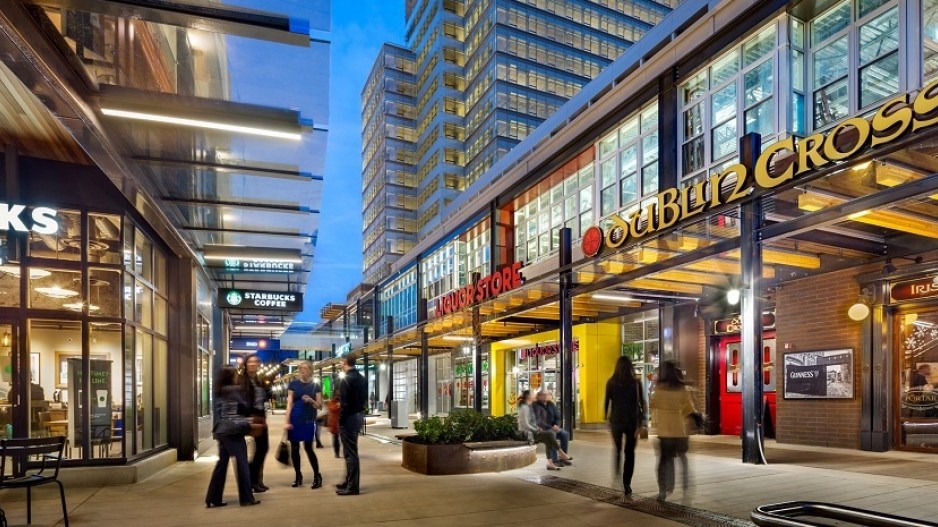When PCI Development Corp. first proposed transit-oriented development at Marine Gateway, the City of 91原创 rejected the proposal.
The city’s reason, according to real estate consultant and developer Michael Geller, was that the land ought to remain zoned for industrial use.
After a four-year rezoning process that started in 2007, PCI was able to begin building a site that now features residential, office and retail components steps from TransLink’s Canada Line. Marine Gateway has since become a framework for mixed-use developments centred on transit nodes, according to Geller.
“I share that to demonstrate how attitudes have changed. Now, around [Marine Drive and Cambie Street], high-density development is spreading, and rightly so,” Geller said.
Concentrations of highrises are increasingly seen around SkyTrain stations in Burnaby, Port Coquitlam, Port Moody and 91原创. But densification “is taking time,” he said.
The province’s housing crisis has pushed both the private and public sectors to build around transit as a means of creating more affordability in daily life, said Geller.
Metro 91原创 and the B.C. government have made plans to promote transit-oriented development through Metro 2050, the region’s growth plan, and the latest provincial budget. Both are in line with Transport 2050, TransLink’s transportation strategy for Metro 91原创, which highlights affordable housing near transit as a top priority.
B.C. has earmarked approximately $394 million from its most recent budget for a property acquisition program dedicated to transit-oriented development, according to a statement to Glacier Media from the Ministry of Transportation and Infrastructure.
Details on how those funds will be allocated will be released “as those plans progress,” the ministry said.
Last spring, the provincial government passed legislation that allows the province to purchase land for the purpose of building housing and community amenities around SkyTain or bus stations, according to the ministry. Prior to the legislation, land purchases could be only used for transit projects and not housing.
Glacier Media reached out to TransLink’s Real Estate Development Program, but was told no one within the organization was available for an interview. According to a statement to Glacier Media, the real estate program is intended to “generate new long-term revenue to fund essential transit services in Metro 91原创.”
While Geller doesn’t think that TransLink should be building housing, he believes that the organization should buy land close to transit and partner with developers that are building around current and future SkyTrain or bus stations.
“I’ve been arguing that since 2008 when I was first interviewed to serve on the board of TransLink,” Geller said.
Of newly completed housing units built around frequently used transit options, Metro 91原创 has set a target that 15 per cent of those units be affordable rental units, according to Jonathan Cote, deputy general manager at Metro 91原创.
“That’s a new target that comes with some new strategies and policies for cities to really focus a lot more work into not only building the right kind of density, close to transit, but also ensuring that people can afford to live in those areas and that we have more affordable housing in those locations too,” he said.
Often, there is demand for housing that is built around high-quality transit locations, which leads to price pressure. The issue, Cote said, is that medium- and low-income households are more likely to live in close proximity to transit. He added that the region “hasn’t done a good job” of ensuring those areas are servicing the right population groups.
Access to transit works to promote affordability by reducing transportation costs and increased access to amenities typically located in areas around transit, according to those who spoke to Glacier Media.
“One of the things that we know for sure is that people living very close to transit, especially Skytrain stations, are far more inclined to not have a car than people who are living elsewhere in the city or in the municipality,” Geller said. “The reason that it results in more affordability is because oftentimes after your shelter, a household’s second-greatest expense is owning a car.”
For many Metro 91原创 residents, parking factors into housing affordability and location, as well as work options, highlighting the need for mixed-used development that can cater to both, Geller said.
